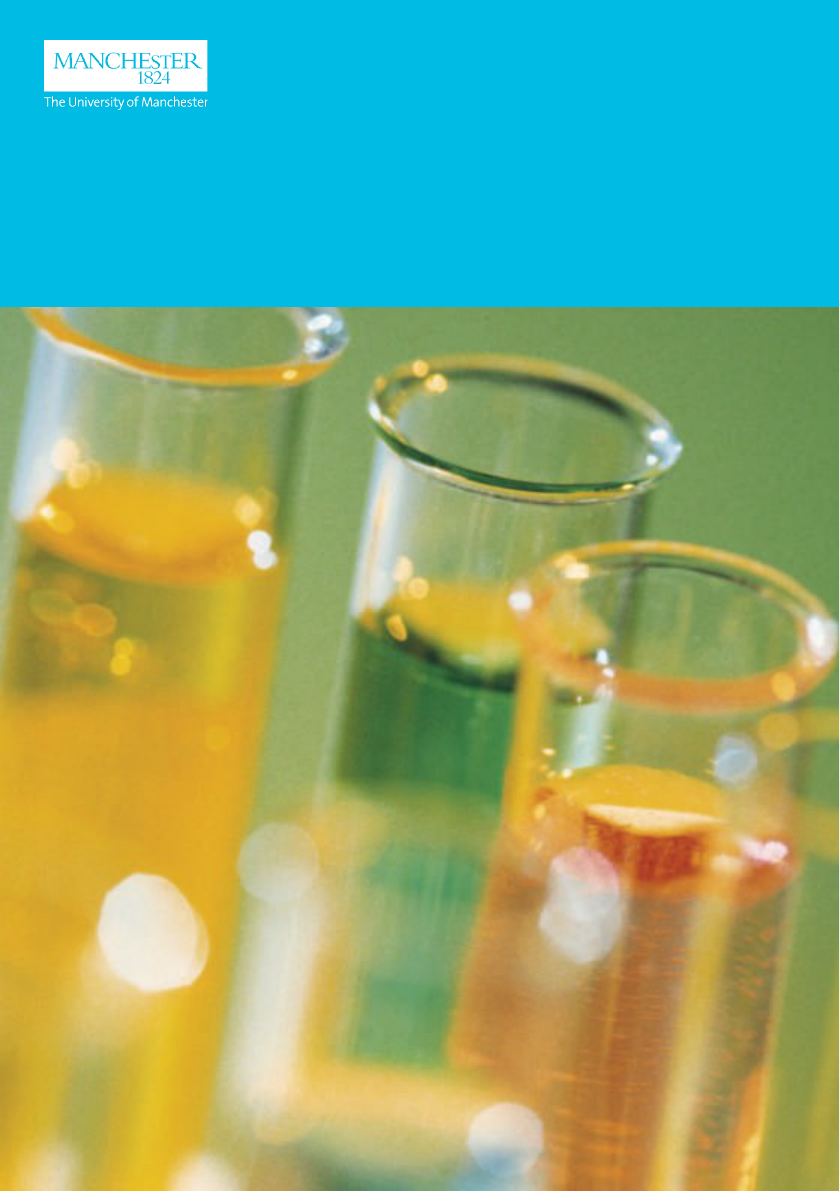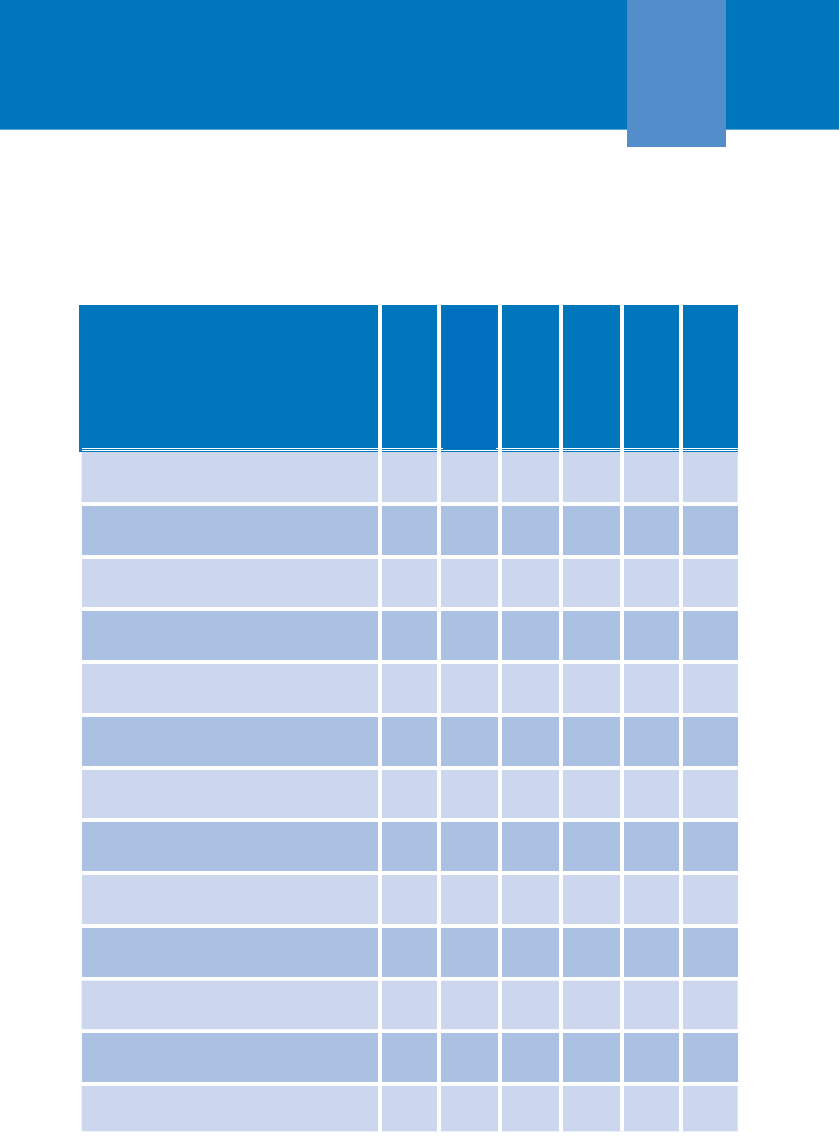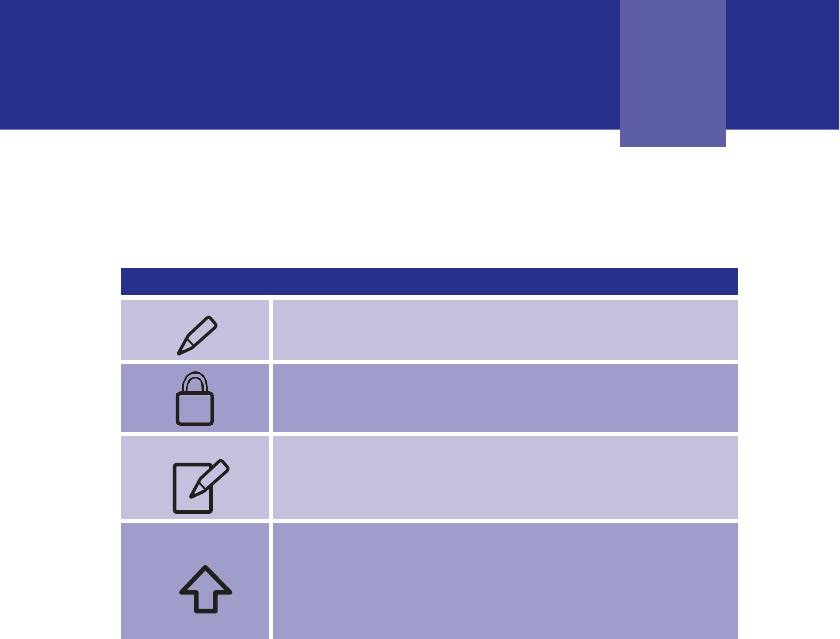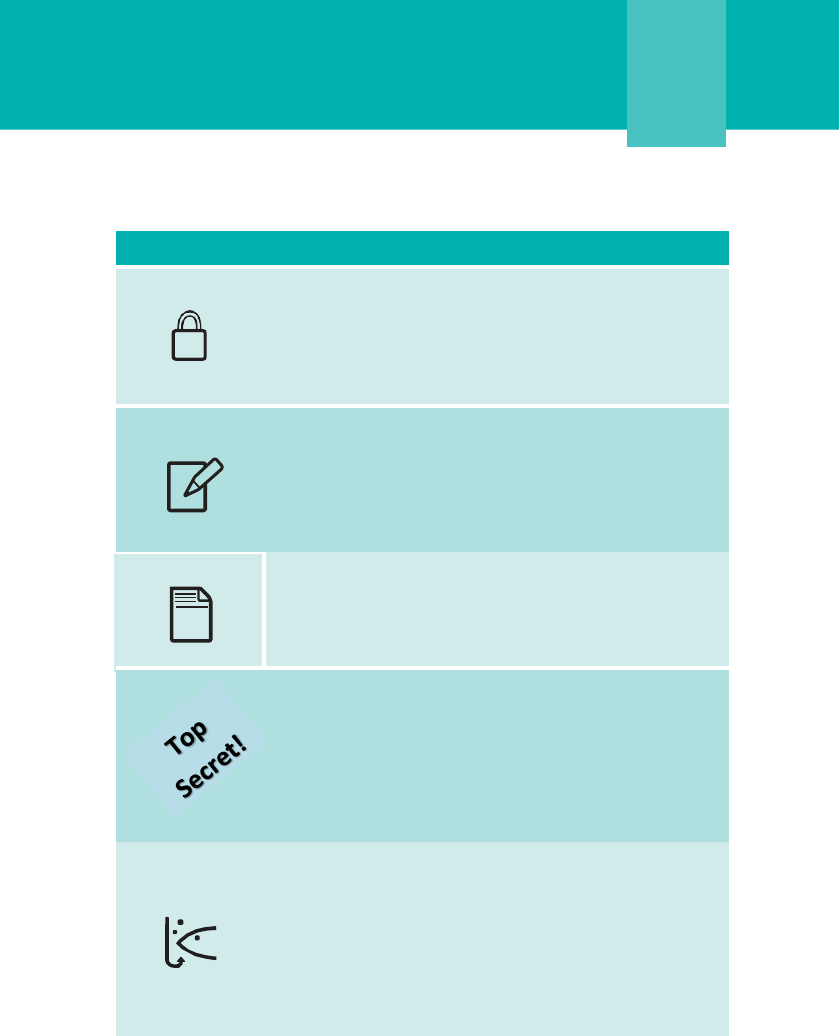
Intellectual Property
& Confidentiality
A Researcher’s Guide

Introduction
2
This Guide is intended to act as a reference for use from time to time
during your academic/research life. Its aim is to provide an overview
of the key issues relating to Intellectual Property (IP) which are likely
to arise during your academic/research career. It explains:
•
The nature of IP, how you may create it, and how to protect it;
•
How to use IP belonging to others safely;
•
How
IP can be commercialised; and
•
The importance of confidentiality.
Your university, NHS Trust or other research institution and/or its
IP commercialisation organisation (or equivalent) will be able to advise
you on these topics and this Guide will act as a prompt for you in these
relationships.
Remember that this is just a guide and does not cover every aspect of IP
nor cover any aspect in great detail nor is it a substitute for you taking
your own independent professional advice. It has also to be read in the
context of your own institution’s published guiding principles, mission
and policy.
This Guide was originally commissioned and created by Mr. Clive Rowland,
Honorary Associate Vice-President, The University of Manchester and Ms.
Janet Knowles, Partner, HGF Law LLP (previously a Partner at Eversheds
LLP).
Contact details
Clive Rowland
The University of Manchester
clive.rowland@manchester.ac.uk
www.manchester.ac.uk
Janet Knowles
HGF Law LLP
jknowles@hgf-law.com
www.hgf.com
©The University of Manchester, HGF Law LLP and Eversheds
Sutherland LLP 2004-2021. All rights reserved.

3
Introduction (The Basics)
Intellectual Property (IP) is something created using your mind, e.g. a story, an image
or invention.
When your concept is produced in a tangible form, say turned into a script, painting
or blueprint, then various IP legal rights (IPRs) are available to prevent others using or
copying that IP so that you can safely market and trade your text, picture or process.
These IPRs attach themselves to your IP.
Reference to IP normally means IP and IPRs therein and those involved in these
creative outputs are variously referred to as Creators or Originators or Inventors.
Some IP is automatic (e.g. copyright) but others require registration (e.g. patents). IP
can be split into main categories as illustrated in Figure 1 on the next page.
In summary, ‘intellectual’ because it is creative, ‘property’ because it is an asset which can
be transacted like any possession and ‘rights’ because recourse to the legal system is
possible.
Confidentiality is about the protection of information.
A variety of information is very important to any business or institution. For example,
employment details, operational performance data and customer target lists. Much
of it will not be generally known and handled privately.
A special type of information is know-how. Know-how is the set of secret, technical
knowledge and activities resulting from experience and testing which usually provides
competitive advantage and is not readily explained or copied. It is often seen as a way
of doing things. Certain types of important know-how will be the most applicable
form of information relevant to you in your research role and will require careful
handling.
Some know-how will be so advantageous, detailed and sensitive it could be considered
a trade secret and afforded special legal protection. A trade secret can be viewed as a
particular class of valuable (confidential) information, such as a chemical formulation,
which is intended to be kept secret and known by only a few trusted employees.
Know-how and trade secrets are akin to property in certain respects and so, whilst they are not
universally defined as IP, it is not inappropriate to include them as an aspect of IP.
The best way to protect any precious information is to mark it as confidential, limit access to it
and, prior to sharing it with others, put in place a written agreement to restrict its circulation or
prohibit further disclosure.

Intellectual Property
Section 1
4
Figure 1
Patents
protect inventions for
products or processes.
The invention must not
be obvious or thought of
before and must be
capable of industrial
application.
You have to apply to the
Intellectual Property
Office to register
patents. They last for 20
years. Also, patent-like
systems are available in
some countries for
‘minor’ inventions
(utility models) and for
new plant varieties.
Copyright
protects items such as
written works, diagrams,
charts, computer source
code, photographs,
music or even
performances. Copyright
arises automatically once
your idea/knowledge has
been expressed in
permanent form. It must
have involved some
element of creation and
skill and not copied
(substantially) from
elsewhere.
Database Rights
protect collections of
works or data (e.g.
results, samples or
patient information)
which have been
systematically arranged
and are accessible
electronically or by
other means. There is
no need to register.
IP
Know-How and
Trade Secrets
Know-how is not
property (IP) as such
but is often treated as
IP. It is an economic
asset and covers
confidential technical
information and
frequently co-exists
with formal IP but can
be stand-alone.
To be a trade secret,
information must not
be generally known but
must be substantial,
valuable and remain
secure.
Designs
protect 3D objects or
designs applied to
them, e.g. laboratory
equipment or the
design of a teapot
or
the design on
wallpaper. They can
arise automatically or
can be registered with
the UK IPO.
Rights also exist for
semiconductor
topographies (layout
designs) also known as
‘mask works’.
Trade Marks
KELLOGG’S, MARS,
MICROSOFT and iPhone
are all successful trade
marks. Their value lies
in the fact that they
denote the origin and
quality of the products
they relate to. Trade
marks can arise
automatically or can be
registered with the
Trade Marks Registry at
the UK IPO.

Intellectual Property
Section 1
5
And in a little more detail...
Patents
Patents protect inventions which relate to a product and/or a process to
make a product. They arise particularly from research & development in
the medical, science, technology and engineering fields.
Once a patent has been granted, it effectively offers the owner a
‘monopoly’ right. This means that only the owner, or someone else with the
owner’s consent, can use the invention for commercial purposes. An
invention will be patentable if: (1) it has not been disclosed publicly
anywhere in the world prior to filing the patent application; (2) it is
inventive; and (3) it is capable of industrial application, (essentially any
commercial, medical or other practical use). Say you have thought of an
invention for a new type of tea bag which can be used 50 times without
losing any flavour! Useful! If you haven’t mentioned it to anyone, it hasn’t
been done before and clearly it’s practical, then a patent sounds possible.
Additionally, some countries have patent-like systems for ‘minor’
inventions (called utility models), giving protection for up to c10 years; and
protection for new plant varieties themselves (known as plant variety rights
or plant breeders’ rights or plant variety certificates) providing cover for 20-
25 years.
If you think your invention is potentially patentable it is essential that the
details of the invention are kept secret until the application for the protection
is made. Disclosure of the key features of the invention before that will make
your application invalid and so may be refused or be open to challenge in the
future if granted.
Methods of disclosure may include publishing details of the invention:
•
in a journal, book, poster or other publication
•
via a website other electronic means
•
in an oral presentation
•
to someone who is not an employee of your organisation, such as
a student, or who is not bound by confidentiality to keep such
information secret or any demonstration or promotion in a public
place.

Intellectual Property
Section 1
6
Intellectual Property Section 1
If the patent/patent application of interest is published in a foreign language
it is possible to check via the Internet or other patent databases to see if an
equivalent document has been published in English in another country such
as the UK, Europe, USA, Canada or Australia, or as a Patent Cooperation
Treaty (PCT) application for example – this is often called “patent equivalent”
searching.
If the patent/patent application of interest has only been published in a
foreign language, you can either get a machine translation of the text into
English, a formal translation of the relevant part of the patent or obtain an
English abstract of the patent.
It is a good idea to carry out a patent search before you start a project in
order to try and ensure that your idea has not been disclosed in the general
or patent literature.
If you are not experienced in patent searching you can obtain advice and
assistance from the range of Patent Libraries located throughout the United
Kingdom. There is also a wealth of information on-line. Both the UK
Intellectual Property Office and the US Patent and Trade Mark Office have
on-line services (www.ipo.gov.uk and www.uspto.gov). You can connect
directly to esp@cenet giving access to details of many patents worldwide
(http://gb.espacenet.com) or try Google (www.patents.google.com
).
Alternatively, there are firms and consultants based throughout the UK which
specialise in patent searching and related services. Most firms of Patent Agents
will offer 30-60 minutes of consultation free of charge. If you think you need
this help, contact your IP commercialisation organisation for further help.
Q: How do I know if my invention is already in the public domain?
A: A previous disclosure can include anything from a published patent,
document, information contained in a book, article, journal, TV
documentary, demonstration or even just common practice. Whilst you
cannot expect to find everything, a good starting point is to see if there
are any existing patents which relate to your invention. It is easier than
ever to find patent information as the format of patents has become
increasingly standardised and there are many user-friendly websites that
you can search.

Intellectual Property
Section 1
7
Patenting Process and Indicative Costs
To obtain patent protection for your invention you will need a patent
specification to be written. This describes your invention. This should ideally
be carried out by a qualified Patent Attorney to make sure good patent
protection is obtained. The specification will describe the invention and
define the desired monopoly (in the form of claims). It will usually be initially
filed at the UK Intellectual Property Office.
Although the cost of a UK patent application is fewer than £100, the Patent
Attorney’s time, effort and skill in drafting the patent specification and
formulating the claims has to be paid for too. This can typically cost anything
from around about £3,000 to £5,000 + depending on the complexity of the
technology, the length of the patent specification and the number of claims
filed.
This initial patent filing will only provide protection in the UK. To obtain
patent protection abroad you will need to file corresponding patent
applications to cover all countries that are of commercial importance
to you.
A filing through the PCT route, a year after your UK filing, can delay the possibility
of filing abroad in most countries at a total cost of around £5,000.
There will be other costs along the patent journey, before the patent is granted
(or reduced in scope or rejected) which depend on such things as objections or
international searching and translations.
When the PCT stage ends, choosing in which countries to file your patent,
known as the National Entry Phase, the cost will depend on each country.
For worldwide protection (the major international markets), it is likely to cost
some £25,000 – £30,000.
There are then annual maintenance costs to pay (which continue to be due until
the expiry of the patent).
So, for patent cover in, say, major European countries, the USA and China, the cost,
which will have been defrayed over the first 5+ years from your initial filing,
is likely to be in the region of £40,000 - £60,000.

Intellectual Property
Section 1
8
Know-How and Trade Secrets
R&D projects and course-work can result in extremely valuable technical
information being created. The only way you can really protect your valuable
information (if it isn’t patented) is through confidentiality.
Know-how is a package of useful, non-patented, practical and secret
technical information, resulting from experience.
If information is significant, very sensitive, can be described in detail, has
commercial value, isn’t generally known and reasonable steps are taken to
ensure secrecy, then a trade secret can be asserted without an independent
evaluation or registration process and has an infinite lifespan.
Trade Secrets can be used, for example, if a business doesn’t want to go
through the patenting process, because that involves openly disclosing the
details of the invention.
Copyright
Have you ever written a thesis or article, written up an experiment, drawn
a diagram or even recorded a presentation you have given on a digital file?
All can be protected by copyright.
There is also copyright in music, broadcasts, sound recordings, computer
software, artistic works including photographs, films and typographical
arrangements of published editions. Copyright does not generally protect
against 3D reproduction of items from industrial drawings or plans (e.g.
models created from blueprints). They are instead protected by design
rights or as registered designs (see Designs section on page 11).
Copyright protects the form in which you express your idea but not the idea
itself. For instance, the copyright in the written words of a thesis may belong
to one person but the patent over the invention described in the thesis may
belong to someone else.
Unlike a patent, there is no need to register copyright in the UK; it arises
automatically. All that is required is mainly that the work must be original,
i.e. not copied from another source.
There are different periods for copyright, depending on the type of work, e.g. for
a written article, copyright would last for the life of the writer plus 70 years.

Intellectual Property
Section 1
9
Q: If I write up an experiment, does the fact that the written piece
of work is protected by copyright prevent anyone from using
the results or other information contained in it?
A: No. Copyright only protects the manner in which you have expressed
yourself i.e. the text, style and layout of the written document. It does
not protect your ideas, results or conclusions. Whilst another person
would be prevented from copying your write-up word for word or in
a
manner which was substantially similar to yours, they would not be
prevented from using the results or other information. This can instead be
protected as confidential information (see Know-
How section on page 9) but
you need to keep the written work secret.
Q: I have been recently asked by a publisher to waive my moral
rights in an article I have written. What does this mean?
A: Moral Rights are personal rights which belong to the author of a
piece of work. They are nothing to do with what is right or wrong!
Moral Rights include the right of an author to be identified as such. This
right has to be specifically asserted to be effective i.e. just write on the
work: “Joe Bloggs has asserted his right, under the Copyright, Designs
and Patents Act 1988, to be identified as the author of this work.“
Other moral rights include the right to object to derogatory
treatment of copyright work and the right not to have the work of
somebody else falsely attributed to you. These do not have to be
asserted. Moral Rights do not exist in computer software or are
limited in any work created by an employee. Whilst Moral Rights
cannot be transferred, they can be waived. However, there is no
reason why you should automatically agree to waive yours. Always
check with your supervisor or relevant institution representative.

Intellectual Property
Section 1
10
Designs
Designs of or on 3-D objects can be protected by design rights which arise
automatically or they can be registered. There are different types – UK
registered and unregistered designs, and Community registered and
unregistered designs. Community registered and unregistered designs offer
protection throughout the EU, not just the UK. Each type is a little different
in the criteria required for protection and the level of protection available.
A few examples are set out below:
UK Unregistered Design Rights can arise automatically in all or just parts
of a design. The design must not have been copied from another source and
it must not be commonplace in the relevant design field. For example, a
design for some scissors, unless very unusually designed, would likely be
commonplace in the field of cutting equipment. There are exceptions; a UK
unregistered design right will not protect any kinds of surface decoration
(e.g. an engraved design on the scissors). Nor will it protect any design which
is dictated by the way it has been made and any design which has been
created to fit around or inside another object (e.g. a plug and
socket) or to match with another object (e.g. a door panel of
a car). Protection of semiconductor topographies is
a form of unregistered design right in the UK. UK
unregistered design rights will last for the longer of
10 years from when the object was first marketed
or 15 years from the date of the
actual design document.
Q: I have recently compiled a database which holds the
location
reference numbers for all the cytology samples I have
used over
the past 6 months. Is this protected by copyright?
A: Yes, if it involved skill in creating it. It may also be protected
separately by “Database Right” (see Database Rights section on
page 12).

Intellectual Property
Section 1
11
UK Registered Designs can be registered with the Design Registry at the
UK Intellectual Property Office. The registration process is not as expensive
and does not take as long as for patents. UK registered designs can be used to
protect more of the design than would be capable of UK unregistered design
right protection. Surface decoration e.g. any etching, engraving or decoration
on the scissors, can also be protected.
To be registrable, the design must not have been previously disclosed to
the public (unless during a 12 month ‘grace period’ immediately before
the application for the design registration). The design must also have
‘individual character’. This means that the design must not produce any
notion of ‘déjà vu’. Designs which are dictated solely by their function
e.g. indentations on a plastic container to help with grip, will not be
registrable. UK registered designs can last for 25 years.
Community Registered Designs follow much the same criteria as for UK
registered designs. They will also last for up to 25 years.
Community Unregistered Design Rights arise automatically in the same
way as UK unregistered design rights. However, they are slightly different.
Community unregistered design rights only last for 3 years. The same criteria
are applied as for UK and community registered designs i.e. the design must
not have been previously disclosed and must have individual character.
Surface decoration can also be protected.
Database Rights
Database Right protects a collection of independent works, data or other
materials which have been systematically or methodically arranged. They
must also be accessible by electronic or other means. This obviously covers
electronic databases, but could in theory cover biological materials
collections, for instance.
Like copyright, there is no need to register, however, the protection only
lasts for 15 years from when the database was compiled.

Intellectual Property
Section 1
12
Trade Marks
It is difficult to avoid trade marks in day to day life. PEPSI, EASYJET, SHELL,
GUINNESS, iPhone, SELFRIDGES, Mini are all examples. Trade marks denote
the origin and the quality of the products they relate to. A well-known trade
mark is often the most identifiable element of a successful product or service.
They will often make a customer prefer one product over another.
Selecting the trade mark can therefore be crucial and so protection of it is
fundamental. The most successful brands are often those that are
completely distinctive, e.g. Coca-Cola.
Trade marks can be registered in the UK and/or throughout the EU and/or
in other countries/regions. They can also arise automatically if a mark has
been used and has consequently built a reputation. Unregistered trade
marks are, however, more difficult to enforce. If you can, it is always better
to register.
A registered trade mark needs to be able to distinguish the goods or
services of one person from those of another. It must be:
•
distinctive, e.g. “MARS” for chocolate bars;
•
it must not be descriptive of the goods or services to which it is
applied, such as ‘BOOTS’ for shoes; and
•
it must not be deceptive or contrary to public morality.
Objections can be raised to a proposed trade mark, by the owner of an
existing identical or similar trade mark registered for identical or similar
goods or services. Trade marks are registered in different classes, which
broadly distinguish different types of goods or services. Once registered
protection will initially last for 10 years, following which it can be renewed
every 10 years.

Intellectual Property
Section 1
13
Set out below is a summary of the types of IPRs which might typically
arise in or be affected by activities within a university or other type of
research institution:
Activity
Research Information – preparing
and collating results/methods
Publishing or presenting research,
academic or technical papers
Using others’ research papers
or publications
Market analysis
Industrial design projects
Contract research
C
onsultancy projects
Receiving important confidential
information
Giving out important
confidential information
Using computer software
Developing computer software
Preparing lecture notes
Responding to technical queries
Patents
Know
-How
Copyright
Design Rights
Database
Rights
Trade Marks

IP Ownership
Section 2
14
Will I own the IP I create?
Whilst there is a number of situations in which you will either create or
contribute to the creation of IP, you may not necessarily own the IP in question.
General Position
As a general rule, an originator usually owns any resultant IP from their work, unless:
- the IP was made in the course of their employment;
- there is an agreement to the contrary;
- any other exception applies (e.g. material use of their institution’s facilities).
University employees will usually include academic staff, technicians, research
staff, support staff and administrators. The position of Visiting Professors or
Honorary Appointments can sometimes be unclear unless detailed arrangements
are in place. If you are working within an NHS Trust, it may not always be clear
whether a nurse or doctor who creates IP has done so in the course of their
employment, particularly if their main role is that of a patient carer.
In certain
instances, particularly within NHS Trusts, an individual may be a part-time
employee or jointly appointed with an external organisation.
It is becoming
increasingly common for NHS employment contracts to refer specifically to IP.
Often people involved may have other activities or be part-time.
If you are a student, you will not normally be classed as an employee unless,
in addition to you being registered as a student, you also have a contract of
employment with your university/institution e.g. as a research assistant.
You will however have a student contract to which you should refer.
Always check in what capacity you and your collaborators are engaged in any
project with respect to IP.
IP Policies
Universities or other research institutions have IP policies which are tailored to
their particular missions. They may also have different approaches with different
types of IP. For example, a university may claim ownership of patentable
inventions but not of copyright in certain scholarly materials.
Take time to familiarise yourself with your university/institution IP policy. Your
university’s Registrar or Trust Manager or equivalent will have copies or it may be
on your organisation’s intranet.

IP Ownership
Section 2
15
Originators and Contributors
It is essential in IP law to be certain who was the actual creator of the IP. The
person(s) who have made the creative leap are the originator(s). Different
specific terms are used for the originator(s) of different types of IP. For instance
in the case of patents they are “inventor(s)” and in the case of literary
copyright works they are “author(s)”.
Other individuals may have worked with the originator(s) to develop the
original idea or work, but if they have not created anything new in IP terms,
then they are not originator(s) but simply contributor(s).
Why is it important to distinguish between originator(s) and contributor(s)?
Well, for instance, in the case of patents, only the originator(s) of the invention
are named as inventors on the patent. Any reward sharing, from successful
business applications of the IP under an IP policy, is often only applicable to
the originator(s) and not to the contributor(s), though originators can arrange
to share any financial benefits they receive with collaborators.
Collaborative/Funded Work
If you are working with or for an industrial sponsor or a different university/
institution, check the terms of the funding arrangements e.g. of the grant, the
contract or the collaboration agreement. This is likely to specify who will own
the IP created.
Group Work
Consider whether you have produced work on your own or whether anyone
else has been involved in its creation. It can be more difficult to establish
ownership if a number of other staff/students has been involved in the
same project.
If you write a paper in conjunction with at least one other author, copyright in
that paper will be jointly owned, if your contribution is not distinct. Similarly, if
you develop a patentable invention jointly within a research team, that
invention may also be jointly owned. You will almost certainly need to obtain
the consent of any joint owners if you intend to do anything with that IP.

IP Ownership
Section 2
16
Consider individuals who may have created IP from another research
institution or any other external organisation. IP contributed may either be
owned by the individual or that individual’s research institution or connected
organisation. Check any other university/institution IP policies. Consider any
individuals who may have created IP but then left your team to go elsewhere.
They may have taken IP with them if it belonged to them.
Consultants
Consider whether any external consultants have contributed to the
development of the materials. Consultants are not classed as employees. IP
created by a consultant is likely to be owned by that consultant even if they
have been paid to do the work, unless stated otherwise in the
individual
consultancy agreement. This is particularly relevant in any NHS Trust
environment. A Trust may often appoint medical clinicians. The clinician
may not be an employee of the Trust and therefore IP may belong to the
clinician or their employer.
Why don’t I own the IP which I create?
At the start of a project you may be asked to sign an acknowledgement
which states that any IP you may create during the project shall be owned
by your university/institution. This, and any other situations, where your
university/institution may claim ownership to the IP, is done for a reason.
If an invention is made which is capable of commercialisation, it is very
unlikely that either you created the invention alone or you would have
the funding or resources to patent the invention and take it through to
commercialisation (see Section 6 – Commercialisation). IP
commercialisation and similar organisations are there to help with this
role. If all the IP is in one place, it makes it a lot easier to file applications
and deal commercially with the invention. Universities, in particular, will
often operate some form of policy so that you can share in the rewards of
the commercialisation. Contact your IP commercialisation organisation
for further details.

IP Ownership
Section 2
17
This table summarises some of the different factors which may be used to determine
who owns the IP.
Are you a
Are you a
What type
of IP have
staff?
How and
with whom
did you
Where did
the IP?

Protecting IP
Section 3
18
What can I do to help protect any IP which I create?
Patents
Some practical tips to help protect your inventions, including how to
register a patent are set out below:
Practical tips
If you come up with a new invention, is it patentable
(see Section 1)? Consider whether your invention has
been previously disclosed – e.g. look at existing patents,
key word searches. Use the internet, in particular
esp@cenet.
Keep both originals and copies of all notes, reports,
drawings, lab books etc. relating to the invention in a
secure place. You should try to record as much detail as
possible. Ensure all originals and copies are dated and are
sufficiently detailed (and clear!) to identify the invention
and how it works. Get your supervisor to sign and date
laboratory notebooks on a regular basis.
Keep the invention confidential (see Section 4 for
practical tips on confidentiality). If you need to disclose
any information, you should first speak to your
supervisor.
If, having done your initial searches/investigations you
still think your idea is patentable, let your supervisor
know and contact your IP commercialisation organisation
to set up a meeting.
If it is decided to go ahead, a patent application can be
drawn up, usually with the help of a patent agent, and
filed at the UK IPO. Once filed, you can indicate on any
relevant marketing literature, publications or products
“Patent applied for, No. [NUMBER]”. Do not do this
before you have filed, as it is illegal to do so.

Protecting IP
Section 3
19
Patent granted. You can use “Patent granted, No:
[NUMBER] [2020] [UK]” on any relevant literature,
publications or products.
The UK IPO will perform a preliminary examination
and search of the application to ensure the invention is
new. The Intellectual Property Office would then send
out a detailed search report and the application will be
filed. However a full examination is then required
during which the Intellectual Property Office will
decide whether the application can be granted. This is
a long, painstaking progress which can take 2 to 3
years (longer if you extend to cover countries beyond
the UK).

Protecting IP
Section 3
20
Copyright
There are no special formalities required to protect copyright work in the
UK. This is not always the case in other countries. The good thing about
copyright is that it arises automatically and it is free! However, as there is
no register to refer to, this sometimes makes it difficult to prove
ownership. Some practical tips to help overcome this and protect
copyright are set out below:
Practical tips
Keep all originals of your copyright work such as
notes, drafts, sketches, drawings, videos etc. in a
secure place.
Record the date you created the copyright work: a
good way to do this is put the work in an envelope,
post it to yourself or somebody independent, such as
a solicitor, and leave the envelope unopened. The
postal stamp can be used to demonstrate the date
before which it had been created.
©
Place a copyright notice (for example, ©J.Bloggs 2020
or ©University of Knowledge 2020) on the piece of
work which will act as a useful reminder to anyone
using the work that copyright exists and that action
may be taken.
Try inserting some irrelevant but intentional mistakes
or anomalies in your work (e.g. a repeated line of
source code, or an unusual spelling mistake). This can
be a good way of illustrating that someone has copied
your work if their work also includes the same mistake
or anomaly. Use watermarks.
Protection of work on the internet is more tricky as it
is extremely difficult to police the internet effectively.
Therefore, don’t publish anything on the internet that
you or your university/institution would not wish to
be copied. Perhaps just publish excerpts, and leave
people to come back to you for the main work.

Protecting IP
Section 3
21
Designs
Some practical tips to help protect your designs are set out below:
Practical tips
Keep all originals of your design drawings, sketches,
samples, models and prototypes.
Keep all these materials in a secure location.
Record all dates of creation and the dates when you
may have disclosed the design, e.g. at a trade fair or
in any publication.
Contact your supervisor and/or IP commercialisation
organisation who can help decide what type of
protection is suitable and whether or not to apply
for registration.

22
Protecting IP
Section 3
Database Rights
Some practical tips to help protect your database rights are set out below:
Practical tips
Keep all your notes, records of telephone
conversations and meetings, e-mails, contact details
and other correspondence which you used to collect
and compile the information contained in your
database.
Keep all your working drafts and original copies of
your database in a secure place. If stored
electronically ensure it is password protected.
Record the date when you created the final database:
again, a good way to do this is to put the work in an
envelope unopened.
Alternatively, if stored electronically, e-mail the
database to yourself or somebody independent, such
as a solicitor. The postal stamp or the date of the
e-mail can be used to demonstrate the date before
which it was created.
Place a copyright notice (for example, © J Bloggs
2020 or © University of Knowledge 2020) at the
bottom of the database.
Insert some intentional but irrelevant mistakes or
anomalies in the database.
©

Protecting IP
Section 3
23
Trade Marks
Some practical tips to help protect your trade marks are set out below:
Practical tips
Consider in which countries you would want to
protect your trade mark – i.e. where would the
products or services be sold or used?
Have a look on the Trade Marks section of the UK IPO
website (www.ipo.gov.uk). Click on ‘Trademarks’ and
then ‘Online TM Services’ then ‘Find Trade Marks’
then ‘By mark text or image’. You can then have a
look to see if there are any similar or identical trade
marks already registered.
The same website contains details on how to register
a trade mark. Contact your IP commercialisation
organisation – they may be able to put you in contact
with a Trade Mark Agent to help with the process.
™
Use the ™ symbol when your trade mark is
unregistered.
®
Use the ® symbol when the trade mark is registered.
DO NOT do this before it is registered. It can be a
criminal offence to do so!

Confidentiality
Section 4
24
Could your work or other information or results be useful to someone else
if they ever got hold of it? Could any of your work be potentially patentable
or registrable as a design? If the answer to any of these questions is yes, it
is important to consider confidentiality. Confidentiality is the best way to
protect your information and know-how.
The ‘someone else’ could be an individual from a company, a member of
another research group or someone from another institution or even a
friend or relative. The information may include chemical formulae,
information from laboratory notebooks, experimental techniques,
information concerning the programming of equipment or source code. It
may be personal or commercially sensitive information such as customer
lists or results from market research. These are just a few examples.
It does not matter how informal a conversation or meeting may seem. You
must always consider the nature of the information you are disclosing and
whether, in the circumstances, it is appropriate to disclose. Let’s look at a
few examples.
James has developed the source code for a new computer program. If
someone else is able to access the source code they may well be able to
write a program to undertake the same task but using different code. This
could then be used or developed further into a product which could be
extremely lucrative. The source code is therefore highly-confidential
information and would need to be protected from disclosure.
Mary has invented, in conjunction with her team, a novel technique for
protein analysis. This invention is potentially patentable. One of the criteria
for the grant of a patent is that the invention must be new and must not
have been previously disclosed to the public. If any information relating to
the invention is disclosed before filing a patent application, this would
completely stop a patent from being granted in most countries.

Confidentiality
Section 4
25
Undoubtedly, there will be situations where disclosure cannot be avoided. In
these circumstances you will want to ensure that the person to whom you
disclose the information not only keeps it secret but also does not use it
improperly. If you show someone confidential information for one project,
your agreement should stop them using the information for another project.
Janice has been working on a summer project. The project has been funded
by an industrial sponsor – Inventive Concepts plc. At the beginning of the
project Janice was asked to sign an acknowledgement to say that she
understood and agreed to comply with the terms of the R&D Agreement
between the university and Inventive Concepts plc. She signed. One of the
terms contained in the R&D Agreement stated that any information
generated during the project must be kept strictly confidential and not
disclosed to anyone else who was not directly involved in the project.
Janice must therefore keep the relevant information confidential.
Chris has a consultancy contract with Security Finance Limited relating to
work on cryptography. The consultancy contract contains a confidentiality
clause. Chris needs to be careful not to disclose any of the confidential
information which Security Finance Limited supplies, when carrying out
other work.
Alex has been able to read a thesis from Alex’s university which is subject
to restricted access because of a confidentiality agreement with Future
Research Ltd. Alex wants to use some of the information from it as part of
some other research. If Alex wants to publish the results of the new
research and this includes information from the restricted access thesis,
Alex will need consent from Future Research Ltd. If Alex quotes from the
thesis, consent from the owner of the copyright in the thesis may also
be needed.

Confidentiality
Section 4
26
To whom can I disclose information?
At law employees have duties of confidentiality to their employer. If you are
an employee it is therefore not a problem as such to share your employer’s
confidential information with colleagues who are employed by the same
employer. Remember – students, visiting academics, secondees and
consultants will not necessarily be employees. Accordingly, if confidential
information is to be disclosed to any of them it is always better to try and
have a form of written confidentiality agreement in place. In the case of
students, this may form part of their student contract.
What should I do to protect the information?
You may have heard references made to a ‘CDA’ or ‘NDA’. These are
abbreviations for “Confidential Disclosure Agreement” or “Non-Disclosure
Agreement”. If you have to disclose important information always try and
put a written agreement of confidentiality in place. The best thing to do is
contact your Research Office or IP commercialisation organisation or your
supervisor who will no doubt have a sample confidentiality agreement for
you to use and will be able to help with putting it in place. Remember you
are probably not authorised to sign a confidentiality agreement for your
institution.
These agreements are all to be taken very seriously. Any information and
discussion covered by them must be treated in confidence and not
disclosed to anyone else, except as set out in the agreement. If there is any
breach of any agreement, the other party may be entitled to seek financial
and other compensation (damages) not only from your employer but
possibly from you personally. This is obviously a very serious matter. In an
environment like a university or NHS Trust it is difficult to supervise closely
compliance with all the agreements that have been signed. There is also, of
course, a natural desire to publish and discuss work openly, which may on
occasions give rise to individuals not realising the importance or the extent
of any agreements that have already been signed. Extra care therefore
needs to be taken.

Confidentiality
Section 4
27
Can I present at a conference?
If you disclose the key information about your invention or design whether
at a conference or elsewhere, it can stop you getting IP protection. You
may, however, be able to make some general statements without disclosing
your invention. Discuss this in advance with your IP commercialisation
organisation.
So if you are about to publish at a conference or elsewhere, speak to your
IP commercialisation organisation as early as possible. They will look to file
an application for a patent before publication, if the subject material has
good business prospects.
You can publish openly once a patent application has been filed. However,
there can be some advantage in waiting a little longer before publishing, in
case any claims of your patent are not accepted when they are examined
as part of the patent registration process. These rejected aspects of your
application would then only ever be protected by confidentiality.

Confidentiality
Section 4
28
What else can I do to protect the information?
Practical tips
Consider whether confidential or sensitive information
is accessible by other students or staff. Be careful
about leaving information visible on desk tops. If
necessary keep information in locked cabinets or use
password security for electronic storage.
Keep a record of what has been disclosed during any
meeting/conversation. If a batch of information is to
be passed over, create a list of the information and, if
possible, get the recipient to sign the list by way of
acknowledgement.
Create some minutes or written record of
conversations. This does not have to be overly formal.
Something in bullet point form will suffice. A copy of
this record can then be sent to the recipient.
Top
Secret!
If information is confidential then it never does any
harm to mark it as such. It has the additional benefit
of putting the recipient on notice of the confidentiality
of the information and hopefully reminding them to
treat it carefully. Don’t be afraid to tell the recipient
you expect them to treat it carefully.
Never disclose more information than is necessary. If
an individual or company has refused to enter into a
CDA, instead of disclosing specific details relating to
an invention – just refer to the advantages the
invention would offer the recipient. Whet their
appetite. Hopefully they will then become interested
to find out more and enter into a CDA.

Confidentiality
Section 4
29
Confidentiality Checklist
•
With whom am I meeting or speaking?
•
Are
they members of my team, my research organisation or employed by
my employer?
•
What information am I sharing?
•
Is
this
information sensitive or otherwise valuable – could it be misused by
the recipient?
•
Is
this
information potentially patentable or registrable as a design?
•
Am I or is my employer under any obligation of confidentiality not to
disclose this information?
•
Have I asked the other person to sign a CDA?
•
Have I marked any of the information as “Confidential” or “Trade
Secret”?
•
Have
I taken notes of the meeting/conversation from which it can be seen
what I have disclosed and what has been said?
Remember – if in doubt, always speak to your supervisor,
authoriser or IP commercialisation organisation.

Using IP
Section 5
30
Q: When should I be careful when using IP
belonging to others? A: Always!
In the previous sections we have concentrated on what IP is and when and
how you are likely to create it. Don’t forget that other people, including
fellow academics or colleagues you may be working with, may also have IP.
Others’ IP can be extremely useful, but you must bear in mind what you
can and cannot not do with it.
Let’s take patents and copyright as an example. If you make a product or
use a process which has been patented by another person or company, you
may infringe the patent rights of that other person or company. Similarly, if
you copy or share by copying, e.g. online, or adapt a piece of work which is
protected by copyright of another person or company, you may infringe
that person’s or company’s copyright. This is very serious because, if you
are infringing, the owner of the IP may get an injunction to stop you using
the IP anymore and/or may sue you and/or your employer for damages.
There are, however, exceptions, which may allow you to do limited things
without infringing the rights of the owner. Examples are set out below:
You can make a patented product or use a patented process for research
purposes providing it is a research area on the subject matter or the patent.
This means you can also do this to modify or improve the invention to which
the patent relates.
You should and can use patents as a source of information. Much of the
information in patents is never published anywhere else and will often contain
sufficient detail in the text and illustrations so that you, as experts, can
understand how to recreate the invention.
You may want to look through the patents simply for inspiration to prevent you
starting to do research on something that has already been done. You can
search to see what other research has been carried on in the same sort of field
as yours and in addition what progress has been made, on which you might be
able to build.
Always check whether the patent in question has been allowed to lapse. In this
case you can use the invention freely.
Patents: Permitted Actions

Using IP
Section 5
31
Copyright
It is only an infringement of copyright to copy, exhibit or use a piece of
work without the consent of the owner of the copyright. If you are
photocopying or digitising a journal article or book chapter, it is possible
that your university/institution may already have obtained the consent
from the copyright owner through its subscription to a blanket licence
through the Copyright Licensing Agency (CLA) or perhaps another
collecting society. This is also common practice within libraries. Have a
look to see if there are any notices next to the photocopier relating to
this. If you are unsure, contact either the university librarian or your
relevant CLA representative for copyright clearance.
In certain cases you can copy copyrighted work. Usually it cannot be a
substantial part though. Be careful with this – there are no hard and fast
rules on how much constitutes a substantial part. Substantial is about the
quality (importance) of the part copied, not the quantity. There are also
allowances for use of limited sections of work where they are being
copied for the purposes of instruction within a university. Again, have a
look to see if there are any notices next to the photocopier which may
contain some guidelines.
You can also use a piece of a copyright work for non-commercial
purposes if you are using it for research or private study or for the
purposes of criticism and review. You must clearly acknowledge any
reference to the work in question.
Patents: Not Permitted Actions

Using IP
Section 5
32
Unless you have obtained the copyright owner’s consent or your use
falls into any of the categories above, you risk infringing copyright if you
copy the work or permit another person to copy the work.
It is important to remember that in any single web page there can be
dozens of different copyrights. If you want to print out a web page,
or copy and paste anything from a web page the same rules will
apply. Check the copyright notice on the web page, it may be that
the copyright owner has already offered consent. If the copying is
not specifically covered in the page’s own notice then you should
obtain specific permission – this can be done by e-mail. If in doubt,
always refer to your internet policy information or contact your
relevant representative.
Copyright
Whilst there are other situations in which it may be possible to use a
copyright work without infringement, these are more limited in use and
practical application. If you are unsure, it is always best to contact your
library (or other relevant representative) for further guidance.
Q: I was recently provided with a number of tissue samples
from an outside company for my project. I also received a
document referred to as an ‘MTA’ with the samples. What
should I do?
A: MTAs are Materials Transfer Agreements. This agreement is likely to
contain a number of restrictions on what you can and cannot do with
the samples, how you must deal with the results and whether, for
example, you must return any back to the company. It is important to
read through the terms carefully and speak to your supervisor and/or
your IP commercialisation organisation. They will let you know whether
it is appropriate and who is authorised to sign it. You must remember
that when any kind of materials are provided to you it is possible they
may contain confidential information or they may even be protected by
a patent. By using materials which are protected by a patent in a
manner which the owner has not permitted you may risk infringement.
Some MTAs may even try to take ownership of IP created by you.

Commercialisation
Section 6
35
What is commercialisation? Commercialisation is where property is used or
disposed of in return for payment, whether in cash, in kind or in any other
form.
In the same way as a house can be bought and sold, IP can also be sold or
transferred to another owner. This is referred to as an
assignment
.
IP can also be
licensed
. This is similar to a ‘lease’ of a flat. The IP owner
permits someone else (the “Licensee”) to use the IP (or part of it) for a
specified purpose in return for payment. If the IP has been used to make a
particular product, payment will often be made in the form of a “royalty”.
The royalty may be a percentage cut of the price the product has been
sold for by the Licensee.
The table below illustrates some main points to remember:
Assignment
Licence
An assignment transfers
ownership.
Once assigned, the original owner
will lose their rights to the IP. If
the original owner continues to
use the IP after assignment, they
may risk infringing the rights of
the new owner.
You can assign ownership of part
of copyright e.g. English
language rights.
The owner of the IP remains the
same.
The licence can be limited in time.
The licence can also be limited in
scope:
An
Exclusive
licence means that the
owner can only permit one licensee
to use the IP and cannot license that
same IP to anyone else nor use the
IP itself.
A
Sole
licence means the same as an
Exclusive licence except that the
owner of the IP can use the IP itself.
A
Non-Exclusive
licence means that
the owner of the IP can license to
more than one licensee.
The manner in which the IP should
be used and the field/research area
in which it can be used can be
defined and limited.

Commercialisation
Section 6
35
Here are some examples of when a licence or an assignment of IP may
be involved:
•
writing an article for a publisher.
•
franchising
out a set of teaching materials for use by another university or
company.
•
permitting another to use equipment or a specific technique you have
developed.
•
permitting
another access to your results and other data for the purposes of
further development/experimentation.
•
permitting
another to incorporate a product you have developed into
another product
Check that any material used via an ‘open licence’ complies with any terms
and conditions of that licence, for example any obligations and restrictions.
If IP has been developed with a lot of potential for commercialisation, it
may be appropriate to transfer the IP into a separate company which is
dedicated to its commercialisation. These are commonly referred to as
‘spin-out companies’ (or occasionally ‘spin-offs’ or ‘start-ups’).
Your IP commercialisation organisation is experienced in identifying and
putting in place appropriate arrangements and agreements. They have
many contacts and access to professional support. It is not always
straightforward and there are many things to consider. If you think you have
IP which can be commercialised or you are approached by any outside
organisation, you should first contact your supervisor and/or your relevant
IP commercialisation organisation to discuss the options.

Commercialisation
Section 6
35
Case Study
Arnold has just been contacted by an editor from Semi-Conductors
Monthly asking whether he would write an article on his conclusions
from a project he has recently been involved in with his supervisor.
Arnold is asked to sign an agreement before writing the article. Arnold
notices one clause which states “I hereby assign all intellectual property
rights in or relating to the Article”. What should Arnold do?
First Arnold should speak with his supervisor.
Arnold and his supervisor should consider whether there are any results,
conclusions or other information which could be patentable or valuable
to readers for use or further development. Disclosure and publication
would prevent any patent being granted.
Once Arnold has written the article, provided it is Arnold’s own work,
Arnold will be the author of the copyright in the written article. Arnold
should also consider his moral rights in connection with the article (see
Section 1). However, Arnold will not necessarily own the copyright in the
article and should check whether he or his university/institution is the
owner, referring to any relevant IP Policy and the IP commercialisation
organisation. It may be that his university/institution has to sign the
agreement rather than Arnold.
Check if an assignment to Semi-Conductors Monthly could be avoided.
A licence should be sufficient for Semi-Conductors Monthly to use the
article for the purposes of publishing it in a specific edition. An
assignment of all intellectual property rights in or relating to the article
would mean that Semi-Conductors Monthly would become the owner of
the copyright in the article and the university/institution or Arnold
would be unable to reproduce the Article again, even internally, without
asking for consent and possibly having to pay a licence fee.

Section 7
Useful Links/Contacts
•
Your Library Information Service (for literature and patent
database searches)
•
Your employer’s intranet for its IP and various related policies as
well as priorities and guidance notes regarding working with
other organisations, agencies and companies
•
Higher Education Funding Councils for good practice IP reports
and guidance on relevant issues (www.hefce.ac.uk
)
(www.sfc.ac.uk) (www.hefcw.ac.uk)
•
Your
Research
Office and IP commercialisation organisation
•
UK
Intellectual
Property Office website (www.ipo.gov.uk)
•
Esp@cenet Patent website (http://gb.espacenet.com)
•
European Patent Office website (www.epo.org)
•
European
IP Helpdesk(www.ipr-helpdesk.org)
•
Community Trade Mark Searches
(www.oami.europa.eu/CTMOnline/RequestManager/en-
SearchBasic_NoReg)
•
US Patent and Trademark Office (www.uspto.gov)
•
UK
Company
Searches (www.companies-house.gov.uk)
MCR.

IP and Confidentiality Checklist
TYPES OF INTELLECTUAL PROPERTY
Copyright
•
Protects items such as writing, music, and
software
•
Protects the expression of an idea, not the idea
itself
•
Protects
original work
•
Arises automatically without registration
•
Duration
mainly life of creator +70 years
Patents
•
Protects
inventions
•
Needs
registering
•
Must
be new, inventive and capable of industrial
application
•
Don’t
disclose pre-application
•
Duration
20 years
UK Unregistered
Design Right
•
Designs
must be original and not commonplace
•
Not protected if surface decoration, dictated by
the way it’s made, made to fit/match another
object
•
Arises
automatically
without registration
•
Duration 10 years from first marketing/15 years
from date of design document
UK/Community
Registered Designs
•
Design
has individual character
•
Not
protected
if dictated by function
•
Don’t disclose more than 12 months pre-
application
•
Duration
25 years
Community Unregistered
Design Right
•
Criteria same as for registered design
•
Arises
automatically
without registration
•
Duration 3 years
Database Rights
•
Protects collection of independent works, data or
other materials arranged systematically or
methodically arranged
•
Arises
automatically without registration
•
Duration
15 years
Trade Marks
•
Denote
origin and quality of goods
•
Not descriptive/must be distinctive
•
Not identical or similar to an existing mark for
similar or identical goods
•
Duration
10 years (renewable)

OWNERSHIP
Ownership
•
IP is generally owned by its creator
•
Employer usually owns IP created by an
employee
•
Consultants generally own the IP they create
•
Student IP depends on the student contract
•
Ownership can be varied by contract
•
IP created jointly may be owned jointly
•
Commissioned designs are owned by
commissioner
PROTECTION
Copyright/Designs/
Database Rights
•
Keep originals of works in a secure place
•
Record all dates of creation
•
Place a copyright notice on each copyright work
•
Insert irrelevant but intentional mistakes or
anomalies in your work
•
Don’t publish on the internet what you don’t
want copied
Patents
•
Check if your invention is new
•
Keep lab notebooks (signed and dated) and
other notes secure
•
Keep invention confidential until filing at least
Trade Marks
•
Use the ™ symbol for unregistered trade mark
•
Use the ® symbol for registered trade mark
•
Set up a watching service
Trade Secrets, Confidential
Information,
Know-how
•
Use written confidentiality agreements
•
File an application before publishing
•
Lock information away
•
Keep notes of meetings
•
Mark information as confidential
•
Disclose as little as is possible
USING IP
Using Others’ IP
•
Can be a source of information
•
Has the period/benefit of protection expired?
•
Do you have a licence?
•
One item can comprise more than one IP right
•
Does an exception apply?
•
Are you copying a substantial (qualitative) part?
•
Have you given appropriate acknowledgement?
COMMERCIALISATION
Commercialisation IP
•
IP is used or disposed of for payment
•
IP can be bought and sold (assigned)
•
IP can be licensed (like a lease)
•
Assignment transfers IP ownership; with
licensing IP owner remains the same
•
Once assigned, original owner loses all rights in
IP
•
Copyright can be assigned in part
•
Licensing allows someone to use IP, often for a
royalty payment
•
Licence can be limited in length, scope and use
©The University of Manchester, HGF Law LLP and Eversheds Sutherland LLP 2004-2020.

